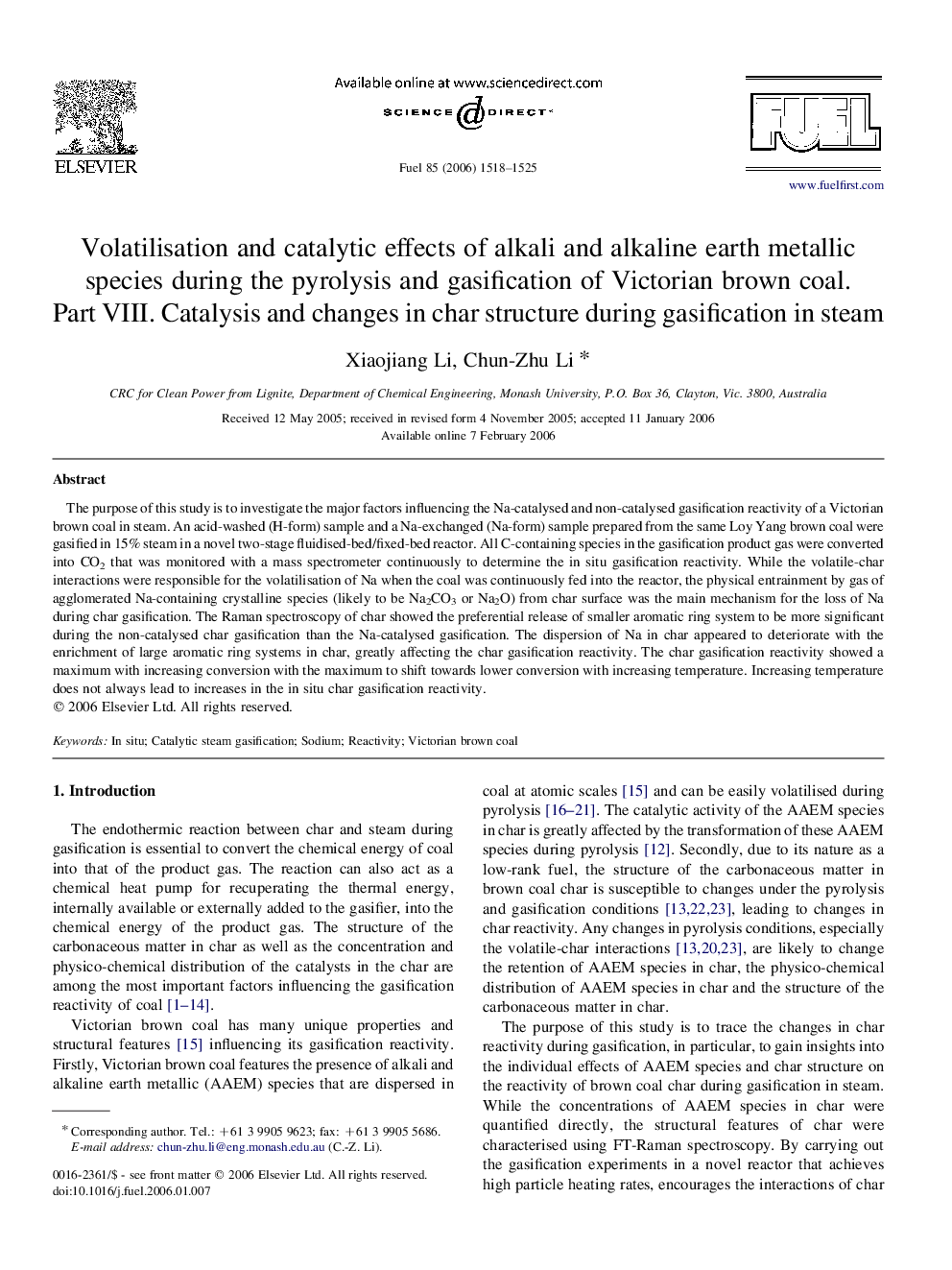| Article ID | Journal | Published Year | Pages | File Type |
|---|---|---|---|---|
| 208571 | Fuel | 2006 | 8 Pages |
The purpose of this study is to investigate the major factors influencing the Na-catalysed and non-catalysed gasification reactivity of a Victorian brown coal in steam. An acid-washed (H-form) sample and a Na-exchanged (Na-form) sample prepared from the same Loy Yang brown coal were gasified in 15% steam in a novel two-stage fluidised-bed/fixed-bed reactor. All C-containing species in the gasification product gas were converted into CO2 that was monitored with a mass spectrometer continuously to determine the in situ gasification reactivity. While the volatile-char interactions were responsible for the volatilisation of Na when the coal was continuously fed into the reactor, the physical entrainment by gas of agglomerated Na-containing crystalline species (likely to be Na2CO3 or Na2O) from char surface was the main mechanism for the loss of Na during char gasification. The Raman spectroscopy of char showed the preferential release of smaller aromatic ring system to be more significant during the non-catalysed char gasification than the Na-catalysed gasification. The dispersion of Na in char appeared to deteriorate with the enrichment of large aromatic ring systems in char, greatly affecting the char gasification reactivity. The char gasification reactivity showed a maximum with increasing conversion with the maximum to shift towards lower conversion with increasing temperature. Increasing temperature does not always lead to increases in the in situ char gasification reactivity.
